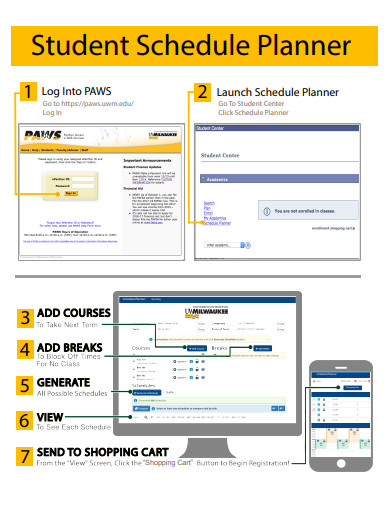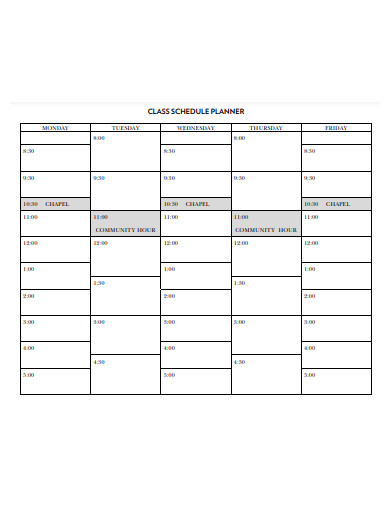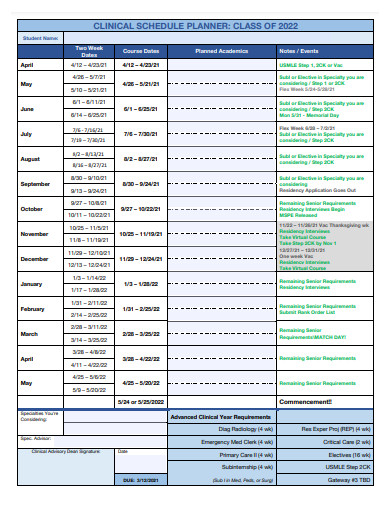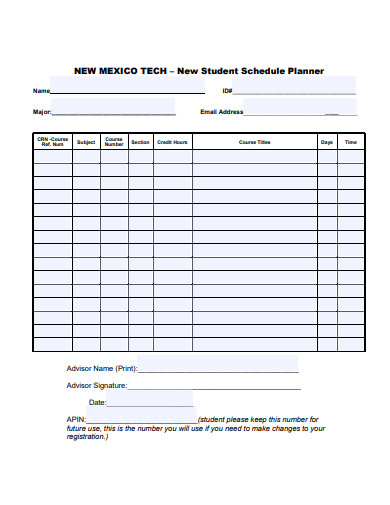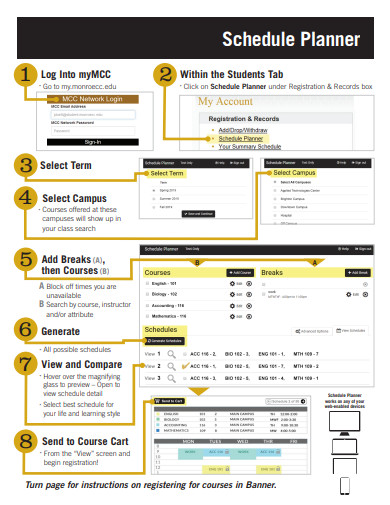There are a million good reasons why you should start scheduling your day. One, it helps you focus on the things that matter, therefore, you can complete your tasks within the timeframe you’ve set. Second, time management won’t be an issue, and you get to enjoy your personal time and work time separately without worrying about any backlogs. Last but not least, you become more productive and progressive. Making a schedule does not take too much time, which is favorable to you if you are strict with time management. In this article, we will discuss schedule planners and how you can make one in no time.
10+ Schedule Planner Samples
1. Daily Schedule Planner
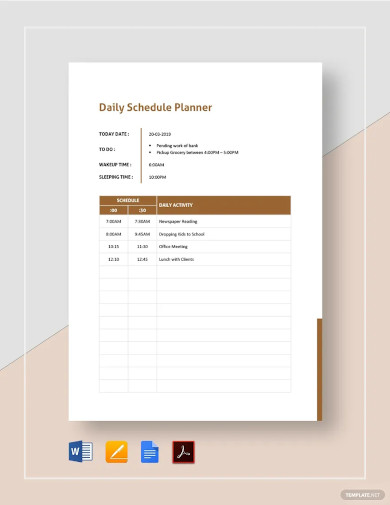
2. Family Schedule Planner
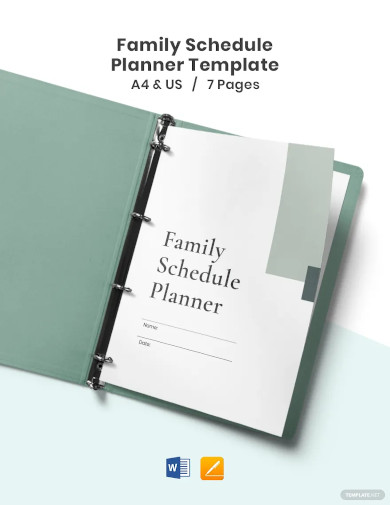
3. Cleaning Schedule Planner

4. Weekly Schedule Planner
5. Course Schedule Planner
6. Event Schedule Planner
7. Student Schedule Planner
8. Class Schedule Planner
9. Clinical Schedule Planner
10. New Student Schedule Planner
11. Sample Schedule Planner
What Is a Schedule Planner?
A schedule planner is a type of journal or record that contains an individual’s list of tasks and goals in chronological order. A schedule planner can be used alternatively as a daily, weekly, or monthly study planner, work planner, to-do list, or personal planner. Schedule planners are very beneficial to people as they help them become more productive and organized individuals, allowing them to develop their skills in effective project management, deliver great work performance, and get them closer to reaching their goals.
How To Create a Schedule Planner?
In creating an effective and efficient schedule planner, you will only need your writing materials such as your small journal, your digital device with a template, and a draft of your initial schedule plan. To begin making your planner, you can follow the steps you can find below,
1. List Down Your Schedule
In the first step, all you need to do is write every task and activity down. Priority, non-important, for immediate action, pending—write them all down and do not worry about organizing them at this point. The purpose of these steps is to allow you to jot down all of your activities so that you won’t have to forget even a simple one.
2. Categorize Your List
Now that you have written all of your supposed tasks and activities, the next step is to organize them. Before that, you can write down your markers: important or time-bound, non-essential (but still needs to be accomplished), and pending. From there, you can write down the tasks and activities according to their importance so you can identify what needs to be done immediately. If you want to be unique with your way of organizing your planner, you can also use highlighters.
3. Indicate the Time
After organizing your task list, you now need to think about and write the time for when you want to perform everything you’ve written. For example, “8:00 A.M.-do my homework”, or, “10:00 P.M.-read a novel”. If you want to perform a series of tasks within a specific timeframe, then you can also indicate the time when you want to end a task so you can jump to the next thing on your list.
4. Optimize Your Schedule Effectively
If you think you will not be able to complete a certain task on the day you were supposed to finish it, then perform it on the date you are able to. You can choose not to wait for that date to come before deciding that there won’t be enough time to do your task. For example, you want to walk the kids to the park on a Sunday, but you find yourself torn between playing with them and going to do the household chores as scheduled. You can either choose to do the chores on a Saturday or perform it early morning on Sunday so you can go to the park in the afternoon.
How can I stick to my schedule?
To diligently stick to your schedule, always be mindful to avoid these things: procrastination and distractions. Sometimes, it cannot be helped if you are unable to perform your tasks due to sickness or prioritizing other things which are of dire importance. Also, having focus, passion, and motivation will help you achieve your goals.
Is blocking my schedule more useful than writing the time?
How you want to write your schedule timeline depends on your preference. If you are unsure about the correct time you will be performing a task, then writing morning, afternoon, or evening, is better than stating the exact hours and minutes. However, writing an hourly schedule helps you identify the time when you want to begin and end a task.
What happens if I may miss a task on my schedule?
If you miss a task or activity on your planner, you can always reschedule them. But if the ones you missed are scheduled only once, such as event programs, examinations, job interviews, and other related stuff, you will really need to look for a solution to make up for them.
To construct an effective schedule planner, always remember that you do not have to be hard on yourself. Be flexible, but do not make excuses to not do what needs to be done, and make sure that you maximize your time well. Begin writing your schedule today by downloading our editable templates which you can check out from our website.
Related Posts
FREE 10+ Meeting Planner Samples in PDF
FREE 10+ Course Planner Samples in PDF
FREE 8+ Calendar Planner Samples in PDF
FREE 10+ Cute Workout Planner Samples in PDF | MS Word | Apple Pages
FREE 10+ Financial Planner Samples in PDF | MS Word | Apple Pages
FREE 10+ Digital Planner Samples in PDF | Apple Pages | MS Word
FREE 7+ Year Life Plan Samples in PDF
FREE 6+ 7 Day Weekly Planner Samples in PDF
FREE 50+ Project Planner Samples in PDF | MS Word
FREE 50+ Planner Samples in PDF | MS Word
FREE 10+ Menu Planner Samples in PDF
FREE 10+ Training Planner Samples in PDF
FREE 6+ Bill Planner Samples in PDF
FREE 8+ Birthday Planner Samples in PDF
FREE 10+ Yearly Planner Samples in PDF | MS Word | Apple Pages




